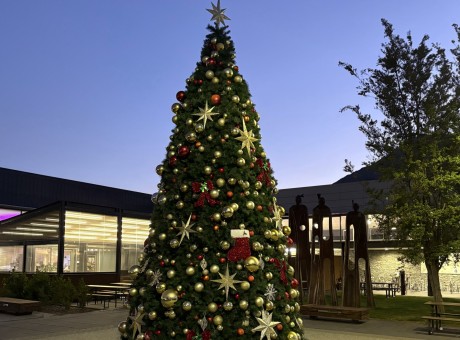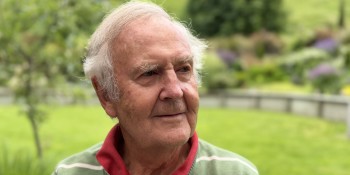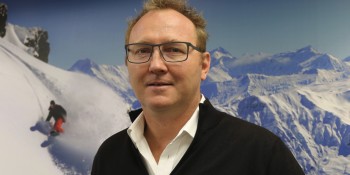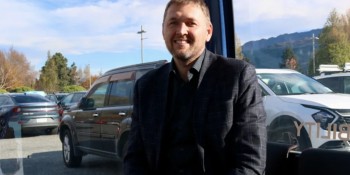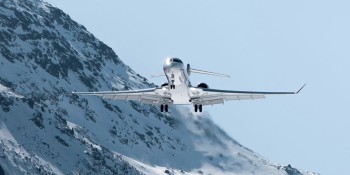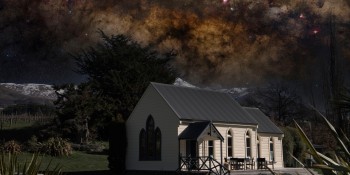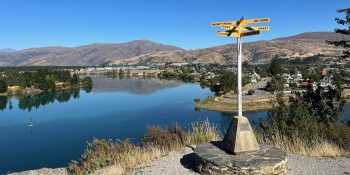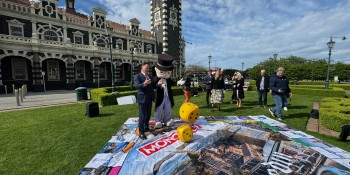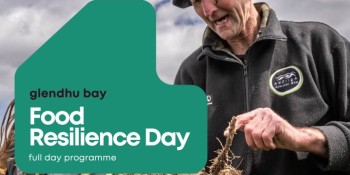Two Queenstown gondola projects vie for airspace

Two gondola projects pursuing different consent processes and using distinct technologies are vying to set up in Queenstown.
People behind the projects say they could complement each other, but could it be a race to the finish for an above-ground transport network for Queenstown?
The proposed gondola projects come from companies Whoosh and Southern Infrastructure Ltd. They are private ventures planning to operate independently of each other.
Southern Infrastructure has applied for consent through the Fast Track Process for the first stage of their gondola route which would travel between Queenstown’s CBD, the airport, and then the Franklin Bus Hub and Ladies Mile residential area. Stops would include Ferry Hill, Frankton North, Lower Shotover, Lake Johnson, and Quail Rise.
Whoosh, with co-funder Remarkables Park Ltd, has lodged an application for Resource Consent for its 1.5 kilometre gondola trial in Remarkables Park. They already have approval from Queenstown Lakes District Council to occupy road and airspace.
Whichever project gets across the line first will be a first for New Zealand. A gondola transport network here could be a game-changer.
Southern Infrastructure is exploring using a ropeway system. It is running a procurement process and received bids from Italy-based Leitner and Austrian company, Doppelmayr. This year Doppelmayr took some key local people around the world to see other cable cars systems in action. Richard Saunders, chief executive of the Otago Regional Council was on the trip as was Southern Infrastructure chief executive Ross Copland.
Ropeway systems were originally developed in Europe last century. Cabins need to be attached to a moving ropeway in order to travel and they operate as a continuous steel rope loop, driven by electricity from the national grid.
It only travels in straight lines but can negotiate steep hillsides and mountainous terrain. This system is designed for very high capacity, moving a lot of people quickly, Copland says.
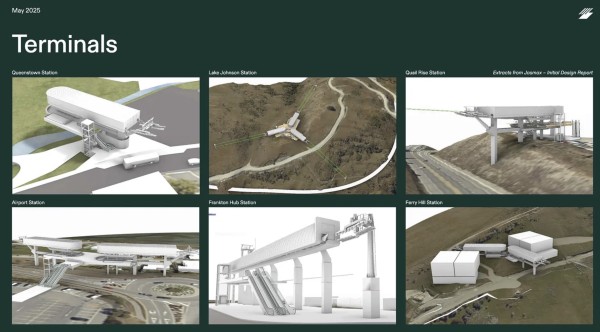
- Proposed terminal images for the Southern Infrastructure project.
Southern Infrastructure’s aiming at gondola speeds of approximately 25 kmh taking 20 to 25 minutes to travel from airport to CBD. Copland says cabins would show up every 30 seconds with initial capacity for 1000 people per hour in each direction, growing to 3000 per hour and beyond.
Southern Infrastructure also projects a massive increase in passenger trips over the next two decades. A report they commissioned estimates “several million passenger trips per annum” in the first few years, extending up to 6.5 million passenger trips by 2050.
However, the scale of the operation means it’s uneconomical to operate through the night.
“Because it’s got so much capacity, it won’t make sense to operate it late into the evening. It’ll run during the core part of the commuting day. It’ll make much more sense to run smaller buses in the late evening,” Copland says.
Whoosh is proposing to use New Zealand-developed technology that has yet to be tested in an urban transport setting.
Alastair Porter, chief executive of Remarkables Park Ltd, is convinced the technology’s fit for purpose.
“This trial is simply proof of concept in the field. My feeling is once we’ve got a test, we’ve got stage one up, and people see how effective, and efficient, and easy it is to ride on, the other stages will follow quickly.”
The Whoosh technology operates autonomous cabins, travelling on a network of static cables, or rails. It can operate around the clock as it can be scaled down according to demand.
With solar panels fitted to the roof of each cabin, they are self-driven, propelling themselves along the cable. At night, the cabins link to the electricity grid.
Porter explains: “There’s no power line. Each cabin will generate its own power from the solar panels on the roof and then recharge from the network at night. And, every time a cabin stops at a station, when it’s stationary, it’s being recharged.”
Each cabin will follow the network, but on different routes, to one of 50 planned stations nearest a passenger’s destination.
Whoosh is 21st century thinking. Think Uber, with a little bit of electric car share and perhaps a smidgeon of the futuristic 1960’s TV cartoon, The Jetsons.
Whoosh anticipates having capacity to transport 3000 to 4500 passengers per hour in each direction with cars travelling 50 to 60 kmh.
Both Porter and Copland say the two systems could be complementary.
But could two independent projects, pursuing different paths for resource consent, result in an uncoordinated network of gondolas, operating independently of one and other, thereby missing an opportunity for a streamlined, cohesive, above-ground transport network for Queenstown?
While not responsible for public transport, QLDC has yet to understand the gondola proposals and their implications for Queenstown.
Mayor John Glover hopes council’s questions will be addressed at briefing sessions with both companies at the beginning of December.
“I’m hoping that this will give us the opportunity to ask the many questions we have and understand if these are either/or options, or could work in tandem,” he says.
“We are yet to understand what each option would require from council, and bear in mind that public transport is a prime function of the ORC and QLDC wouldn’t be procuring this infrastructure.”
Glover is happy to entertain the prospect of a privately-funded network but he also sees the need for cohesion.
“From a personal perspective, I think it’s essential that we have a whole of district plan for how we get around so that we can see how proposals such as these help deliver that.
“I’m encouraged that the private sector is beating a path to our door to be part of the solution to our traffic woes, and each will follow the consenting process that they feel best works for them.”
Otago Regional Council will have input into the Fast Track process if Southern Infrastructure’s application is successful. However, ORC is not participating in Whoosh’s application for Resource Consent.
ORC says it has significant experience rolling out public transport services and is able to draw on expertise as required, should new public transport options become available.
Porter believes Whoosh’s technology offers more flexibility than that of the moving rope-loop cable car system.
“It’s infinitely more flexible” he says. “It can be on demand. You’re not moving heavy cable all the time. You don’t need operators to operate the machinery, and you can run 24 hours a day. It’s fast, it’s low cost to operate, and it’s relatively low cost to build. And one of the neat things about it is that it’s a bit like Lego. It’s relatively straightforward to add to the network.
“So, if the gondola network goes past an undeveloped site in Remarkables Park and that site then becomes a hotel, and the hotel says, ‘Oh, we want to connect to the gondola’, we can then clip on a connection to either outside the hotel or even have it land at the first-floor level of the hotel.”
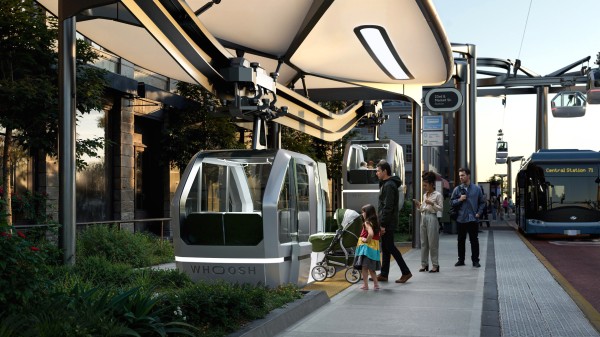
- The Whoosh Vision for a station.
Like Southern Infrastructure, Whoosh is planning to cater for commuters during rush hour, so what would that look like for people travelling from nearby suburbs?
“I’ve got staff that live at Lake Hayes, and, you know, by the time they drop children at school or whatever, it’s a half hour-plus travel time because the roads are so congested. They’d be able to do that in probably in five minutes in a gondola” says Porter.
Whereas Southern Infrastructure’s proposed European design is a hop-on, hop-off system much like an urban bus service, Whoosh is offering an individualised, ‘book an Uber’ service.
Porter predicts this will change families’ transport commitments.
“I think, ultimately, a full Whoosh network will mean a lot of people will just give up on having a car.
“Where Whoosh works well is for all your day-to-day, regular, go to work, school, or whatever. Then, what people will do when they want to use a car, because they want to go out of town or something, is they’ll hire one.”
Whoosh chief executive, Dr Chris Allington, reportedly said they’re looking for more investors for the Remarkables Park trial. Crux asked Porter if he thought this might be the kind of thing the New Zealand Superannuation Fund would invest in?
“I’d love the New Zealand Superannuation Fund to invest. Because it’s such green technology, the people that we are talking to are green funds because it’s a great environmental solution.”
Copland says their transport system would work in conjunction with the bus and ferry networks: “It’s very much complementary.”
“Those key transport nodes are where we’re really focussing on, and then moving that volume between those nodes, allowing the bus services to do the distribution”.
Clearly the current bus network needs upgrading if passengers are to reach their ultimate destinations. Southern Infrastructure is addressing this shortcoming.
“We are working to design those interfaces with JasMax, who are an urban design and transport architecture practice. They’re providing some guidance around how to design really efficient interconnection points for what they call the intermodal transport shift,” Copland says.

- The Southern Infrastructure network would initially focus on key transport nodes.
The environmental benefits of a gondola network would be significant and manyfold for Queenstown.
Both companies are conscious of the carbon footprint of production, construction and operation of their networks.
Copland says Doppelmayr has conducted a life-cycle analysis of its system including manufacture, construction and operational emissions.
“That demonstrates quite extraordinary emissions reductions when you add the fact that, you know, Queenstown is growing at such a rate that there is no do-nothing scenario.”
Asked why Southern Infrastructure is exploring international suppliers, and not including New Zealand-developed technology Whoosh, Copland says they felt the Dopplemayr cable car technology was the “right solution for Queenstown right now”.
“It’s always exciting to see Kiwi homegrown technologies and, to the extent that the Whoosh team continue to demonstrate their technology in a safe operating environment, we’d love to see the network expanded in the future and it (Whoosh) may have really unique advantages to grow our core transport network,” he says.
“I guess, with startup technologies, they look good on paper, but there are some sort of learning challenges that most new technologies face and they have to go through that learning journey.”
“We think it’s a great initiative and it’s an exciting journey that they’re on as a startup, but you don’t see airlines buying prototype aircraft to put onto the core transport routes, and likewise, Queenstown needs a reliable high-capacity public transport system.
“We need something that has a track record that’s got availability and a supply chain that has proven, you know, millions of operating hours of proven experience in a mass transit context.”







